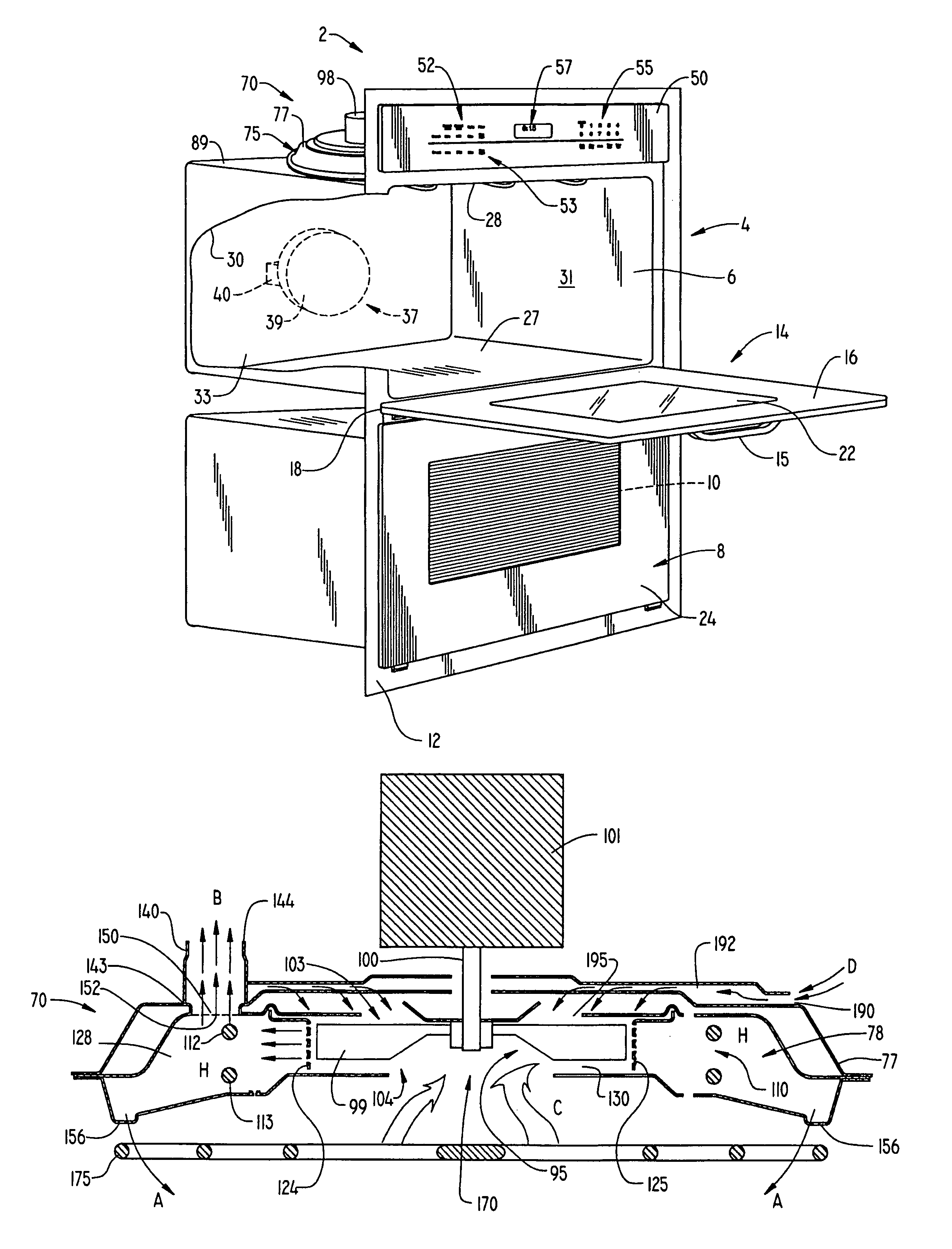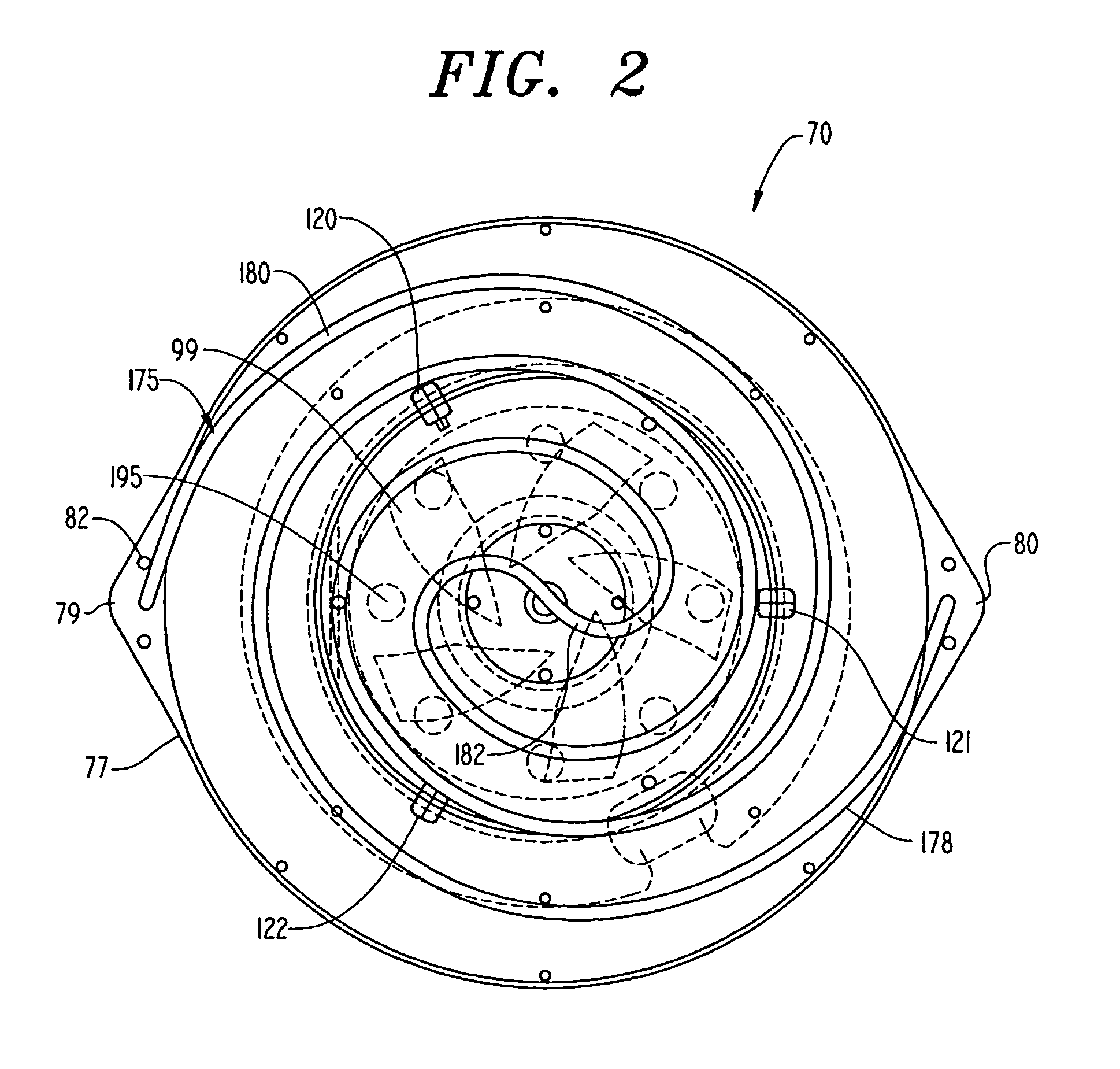Pressure exhaust system for a convection cooking appliance
a technology of pressure exhaust system and convection cooking appliance, which is applied in the field of pressure exhaust system for convection cooking appliance, can solve the problems of large smoke cloud that could pour out, large ducting, and inability to cool down, and achieve the effect of sufficient tim
- Summary
- Abstract
- Description
- Claims
- Application Information
AI Technical Summary
Benefits of technology
Problems solved by technology
Method used
Image
Examples
Embodiment Construction
[0015]With initial reference to FIG. 1, a cooking appliance constructed in accordance with the present invention is generally illustrated at 2. Although cooking appliance 2 is depicted as a dual wall oven, it should be understood that the present invention is not limited to this particular model type and can be incorporated into various other types of oven configurations, e.g., cabinet mounted ovens, free-standing ranges and slide-in ranges. In the embodiment shown, cooking appliance 2 includes an upper oven 4 having upper oven cavity 6 and a lower oven 8 including a lower oven cavity 10. Upper oven 4 is preferably designed to perform a combination microwave / convection cooking process, while lower oven 8 is adapted to perform a conventional, radiant cooking operation. As shown, cooking appliance 2 includes an outer frame 12 for, at least partially, supporting both upper oven 4 and lower oven 8 within associated wall structure (not shown).
[0016]In a manner known in the art, a door as...
PUM
 Login to View More
Login to View More Abstract
Description
Claims
Application Information
 Login to View More
Login to View More - R&D
- Intellectual Property
- Life Sciences
- Materials
- Tech Scout
- Unparalleled Data Quality
- Higher Quality Content
- 60% Fewer Hallucinations
Browse by: Latest US Patents, China's latest patents, Technical Efficacy Thesaurus, Application Domain, Technology Topic, Popular Technical Reports.
© 2025 PatSnap. All rights reserved.Legal|Privacy policy|Modern Slavery Act Transparency Statement|Sitemap|About US| Contact US: help@patsnap.com



